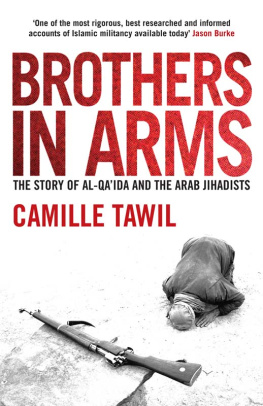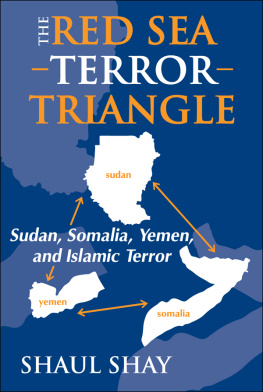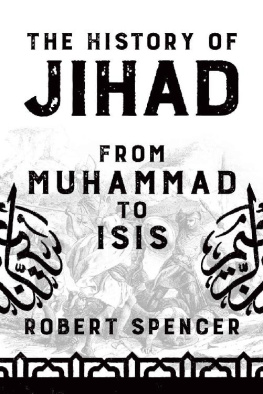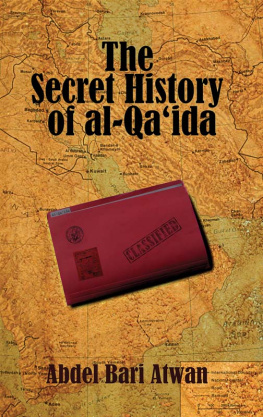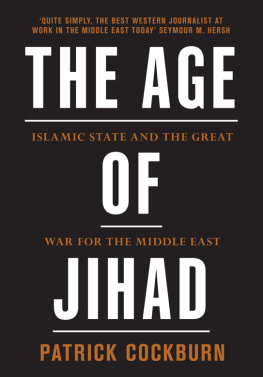EBOOK ISBN 978-0-86356-474-1
First published in Arabic as Al Qaida Wa Akhawatuha by Dar al Saqi in 2007
This English ebook edition published by Saqi Books, London, in 2011
Copyright Camille Tawil 2011
Translation Robin Bray 2011
All rights reserved. No part of this book may be reproduced or transmitted in any form or by any means, electronic or mechanical, including photocopying, recording or by any information storage and retrieval system, without permission in writing from the publisher.
This book is sold subject to the condition that it shall not, by way of trade or otherwise, be lent, re-sold, hired out, or otherwise circulated without the publishers prior consent in any form of binding or cover other than that in which it is published and without a similar condition including this condition being imposed on the subsequent purchaser.
A full CIP record for this book is available from the British Library.
A full CIP record for this book is available from the Library of Congress.
SAQI
26 Westbourne Grove, London W2 5RH, UK
2398 Doswell Avenue, Saint Paul, Minnesota, 55108, USA
Verdun, Beirut, Lebanon
www.saqibooks.com
Introduction
Americas War on Terror under the George W. Bush administration brought dramatic changes around the world. The transformation was triggered by al-Qaidas double blow to the United States on 11 September 2001, striking at its political heart in Washington and its economic capital, New York. Bush had entered the White House in January 2001, bringing to an end Bill Clintons years of active engagement in the international arena. With the transition from Democratic to Republican administrations, the United States, the worlds sole remaining superpower since the collapse of the Soviet Union in the early 1990s, had begun to close itself off from the outside world. Yet just as America seemed to be drifting into a kind of political slumber, the spectacle of hijacked aircraft crashing into some of its most iconic buildings brought it to its senses with a jolt. Suddenly the US was confronted by what looked like a new menace: al-Qaida. Yet in truth this bugbear had not emerged with the suddenness of those planes from the skies. Its origins lay far away, in the Afghan quagmire of the 1980s and Americas own support for the mujahidin in their conflict with Russia.
In the immediate aftermath of 9/11, Washingtons instinct was to hit back at its assailants twice as hard. And that is precisely what it did, retaliating within days by launching its own assault on Osama bin Ladens stronghold in Afghanistan. The countrys cities fell, in quick succession, into the hands of the Americans and their Afghan allies. It was only a matter of days before the collapse of the Taliban government, which, since the mid-1990s, had played host to al-Qaida and many other jihadists. The Americans success was not down to their vast military arsenal alone: the millions of dollars they had paid the various Afghan factions had also played their part. Yet, whatever it cost them, there is no denying the scale of the Americans achievement: a mere two months into their War on Terror they had installed a pro-US government in Kabul.
Nor was this the Americans only accomplishment: just as importantly, they had driven bin Laden and his fellow al-Qaida leaders from their lair in Afghanistan, at the same time destroying dozens of training camps erected during their long years in the country. Many of the fighters who now shared bin Ladens fate had never supported his war against America, yet now that their Afghan stronghold had crumbled they scattered all over the world, to be hunted down by intelligence services wherever they went. Thousands were killed and many others imprisoned. The rest vanished without trace.
But after almost a decade, and a change of administration in the US, the rebranding of the War on Terror by the Obama administration as the Overseas Contingency Operation has done nothing to stop the escalating conflict. In Afghanistan, the Taliban remain a formidable force, while in Iraq, which the Americans invaded in 2003, ostensibly because of its weapons of mass destruction, no such weapons have ever been found. Nor has any evidence emerged of the purported relationship between Iraqs former regime and al-Qaida, which, far from aligning itself with the secular Baathists, had condemned them as infidels. Meanwhile, although US troops formally withdrew from Baghdad in June 2009, thousands of American soldiers remain in Iraq, and many of them are set to stay until the end of 2011.
As the Americans get bogged down in Iraq and Afghanistan, the main beneficiary seems to be al-Qaida itself, the principal target of the war. It has largely succeeded in absorbing the blows that the Americans and their allies have dealt it. In certain areas, particularly the border region between Afghanistan and Pakistan, it has managed to rally its forces. But it has become a different organisation in the process. On the one hand al-Qaida has assumed global dimensions, something it has aspired to ever since it was first created in 1988. And yet at the same time it is no longer a single entity: it would be more accurate today to speak of multiple al-Qaidas rather than a monolithic organisation. Bin Laden still leads core al-Qaida, based in Afghanistan and Pakistan, but its franchises around the world are many and various, comprising autonomous affiliates from Iraq to Morocco.
In 2001 America was at war with a single al-Qaida in Afghanistan; now it is fighting several permutations of the group all around the globe, without any prospect of containing them. Since 11 September 2001 al-Qaida has gone global; it follows that its conflict with the Americans and their allies has assumed the character of a global war too. Perhaps this is what al-Qaida wanted all along: to convert its struggle against the US into a holy war, pitting Muslims against infidel Western aggressors. Such a perception is of course false, even if American policy often serves to reinforce it in the minds of some Muslim observers. Under the Bush administration, the US gradually expanded its War on Terror to include ever more Islamist groups which it regarded as tainted by their association with al-Qaida. Paradoxically, the very intensity of this campaign has helped breathe new life into bin Ladens organisation, which, by early 2002, had seemed on the brink of collapse. The Americans attacks on other jihadist groups ultimately forced many of them to unite behind bin Laden, despite their grave reservations about his agenda. Previously their priority had been to fight the rulers of the Islamic world, whom they regarded as apostates; now their main goal was to wage war on the West, the root of all evil. There was a new logic behind this shift in focus. It was the infidel West which enabled Middle Eastern regimes to cling to power: defeat the infidels, and their apostate puppets would fall with them. Or so bin Laden hoped.

